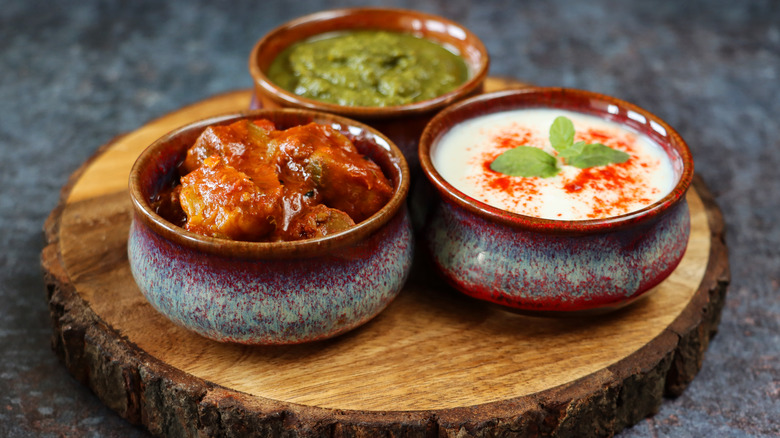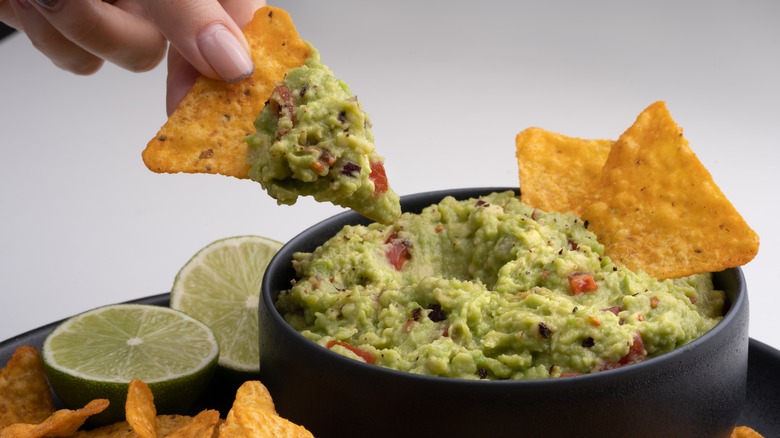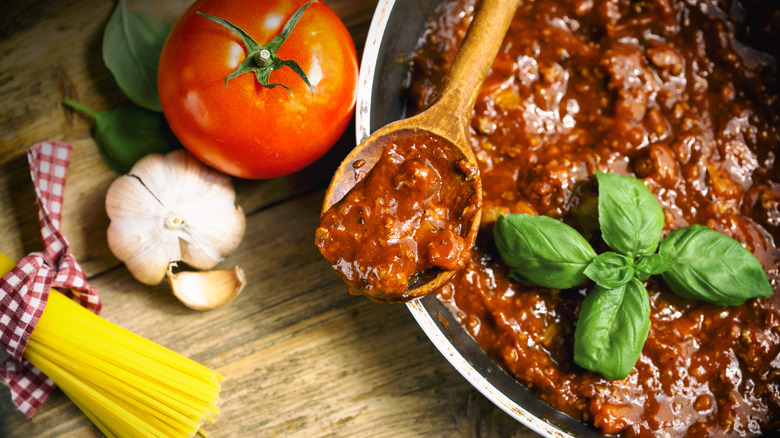Is There An Actual Difference Between A Dip And A Sauce?
Have you ever tried dahl, ponzu, baba ganoush, and other popular dips from around the world? These are usually served with snacks or appetizers and have a thick texture. Just imagine dipping your favorite chips or crackers in queso, savoring every bite with all your senses. Hot sauce, BBQ sauce, or cheese sauce would work, too, but it's simply not the same thing.
While it's true that most dips can be used as sauces and the other way around, each serves a different purpose. Generally, sauces are thinner than dips and can be poured over food or tossed with the other ingredients. For example, you'll pour gravy over meatloaf, turkey, mashed potatoes, or rice dishes.
Dips have a thick consistency that can complement various snacks and appetizers. Some taste good on their own, and you can enjoy them as a meal. "A dip is its own dish. When I'm talking about dip, I'm talking about whitefish dip, hummus, baba ganoush, that weird cheese ball that people like that's covered in nuts," explained Michelle Santiago Cortés, a food writer and researcher, in an interview with Refinery29. However, the difference between dips and sauces isn't always obvious, especially when we're talking about thinner dips like salsa or thick sauces like tzatziki and mayo.
Dips and sauces serve different purposes
By definition, a dip is a thick sauce that can be served with sweet or savory snacks, pita bread, falafel, and other foods. Think about ajvar, chutney, guacamole, or pico de gallo. They're thick enough to be eaten with a fork, and some can be enjoyed as a standalone snack. By comparison, most sauces have a liquid or semi-liquid consistency, which allows you to pour them over pasta, meatballs, grilled vegetables, or desserts. For instance, white wine sauce can be a perfect addition to lobster linguine or other pasta dishes.
But, as you can see, the line between the two is blurred. Take salsa, for example. Its name means "sauce," but you can serve it as a snack, side dish, topping, or dip. "With chips, it's a dip. On eggs, it's a condiment. In a burrito, it's a sauce," explains a Reddit user. The same goes for mayo, which can be served as a sauce, dip, or topping. "A dip is a dipping sauce," said another Reddit user. They added, "Generally, sauce goes on the food rather than the food into the sauce, but a dip is a type of sauce."
At the end of the day, it all comes down to your personal preferences. Unless you're a professional chef, no one will bat an eye if you dip tortilla chips in garlic sauce or combine hummus with pasta for a quick, filling lunch.
Get creative with your favorite dips and sauces
Both sauces and dips can enhance the flavor and texture of your dishes, depending on how you use them. For example, honey mustard sauce can double as a dip for chicken fingers, crackers, or vegetable sticks, whereas teriyaki sauce is perfect for dipping sushi rolls or grilled skewers. If you're making crispy potato wedges or fried calamari, dip them in aioli for a light, garlicky flavor.
On a similar note, you can use dips as sauces to elevate your meals. For instance, spread buffalo chicken dip onto pizza dough as a sauce base. Top it with shredded chicken, cheese, veggies, and other ingredients you love. For a unique spin on pasta, try this spinach and artichoke dip. Thin it out with a bit of cream or milk, and then toss it with the cooked pasta.
Dips are also suitable for thickening a dish, whereas sauces help bind the ingredients together. So, if you want to make a meal feel filling, mix in a dip like hummus, sambal, or guacamole. But if you rather need a binding agent, use a sauce made with tapioca, rice flour, corn starch, or arrowroot.


